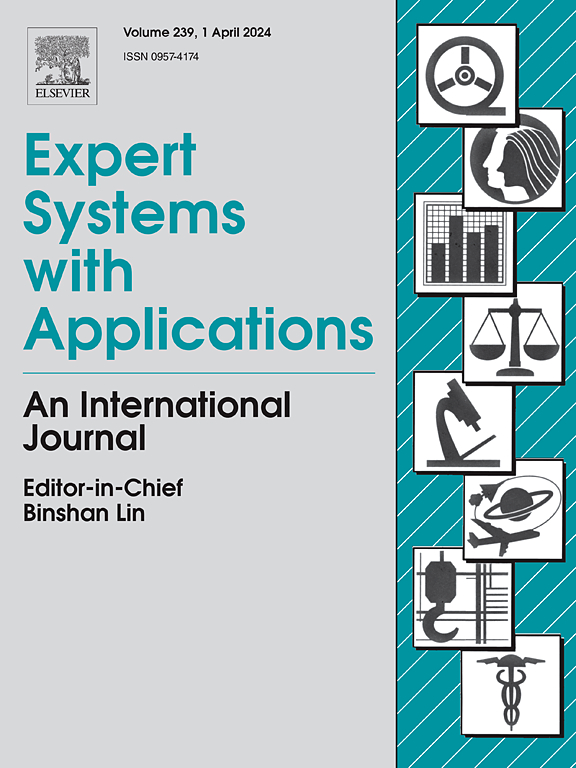CLTAP:一种使用预训练的大型语言嵌入模型和对比学习来增强语境共注意机制的tap结合肽预测方法
IF 7.5
1区 计算机科学
Q1 COMPUTER SCIENCE, ARTIFICIAL INTELLIGENCE
引用次数: 0
摘要
抗原加工相关转运蛋白(TAP)将多肽转运到内质网,这是确定CD8+ T细胞表位的关键步骤。CLTAP是一种预测tap结合肽的新方法,该方法将对比学习(CL)与上下文共同注意机制相结合,提高了预测的准确性。据我们所知,这是第一个利用CL预测tap结合肽的研究。利用CL分别捕获相似和不同tap结合肽之间的一致性和不一致性,显著增强了模型区分不同样品的能力。此外,本研究引入的上下文共注意机制有效地整合并强调了肽序列的两个不同特征。CL进一步增强了融合特征,产生了判别表征,显著提高了tap结合肽预测的准确性。通过集成这两种技术,CLTAP在多个基准数据集上的预测性能优于现有方法。对测试数据集的评估表明,CLTAP在准确率上优于第二优方法6.32%,在马修相关系数上优于15.26%,在f1得分上优于4.48%,在AUROC上优于4.13%。它为tap结合肽的研究和应用提供了一种高效可靠的工具。CLTAP可在https://github.com/ChenWeiCCZU/CLTAP免费获得。本文章由计算机程序翻译,如有差异,请以英文原文为准。
CLTAP: A TAP-binding peptide prediction method using pre-trained large language-embedding models with contrastive learning to enhance contextual co-attention mechanism
The transporter associated with antigen processing (TAP) transports peptides to the endoplasmic reticulum, which is a crucial step for determining CD8+ T cell epitopes. CLTAP is a novel method for predicting TAP-binding peptides, which enhances prediction accuracy by integrating contrastive learning (CL) with a contextual co-attention mechanism. To the best of our knowledge, this is the first study to utilize CL for predicting TAP-binding peptides. Leveraging CL to capture the consistency and inconsistency among similar and dissimilar TAP-binding peptides, respectively, significantly enhanced the model’s ability to differentiate between various samples. Additionally, the contextual co-attention mechanism introduced in this study effectively integrates and emphasizes two distinct features of peptide sequences. CL further enhanced the fused features, resulting in discriminative representations and significantly improving the accuracy of TAP-binding peptide prediction. By integrating these two technologies, CLTAP demonstrates superior predictive performance than existing methods across multiple benchmark datasets. Evaluations on test datasets indicate that CLTAP outperforms the second-best method by 6.32 % in Accuracy, 15.26 % in Matthews Correlation Coefficient, 4.48 % in F1-score, and 4.13 % in AUROC. It offers an efficient and reliable tool for TAP-binding peptide research and applications. CLTAP is freely available at https://github.com/ChenWeiCCZU/CLTAP.
求助全文
通过发布文献求助,成功后即可免费获取论文全文。
去求助
来源期刊

Expert Systems with Applications
工程技术-工程:电子与电气
CiteScore
13.80
自引率
10.60%
发文量
2045
审稿时长
8.7 months
期刊介绍:
Expert Systems With Applications is an international journal dedicated to the exchange of information on expert and intelligent systems used globally in industry, government, and universities. The journal emphasizes original papers covering the design, development, testing, implementation, and management of these systems, offering practical guidelines. It spans various sectors such as finance, engineering, marketing, law, project management, information management, medicine, and more. The journal also welcomes papers on multi-agent systems, knowledge management, neural networks, knowledge discovery, data mining, and other related areas, excluding applications to military/defense systems.
 求助内容:
求助内容: 应助结果提醒方式:
应助结果提醒方式:


